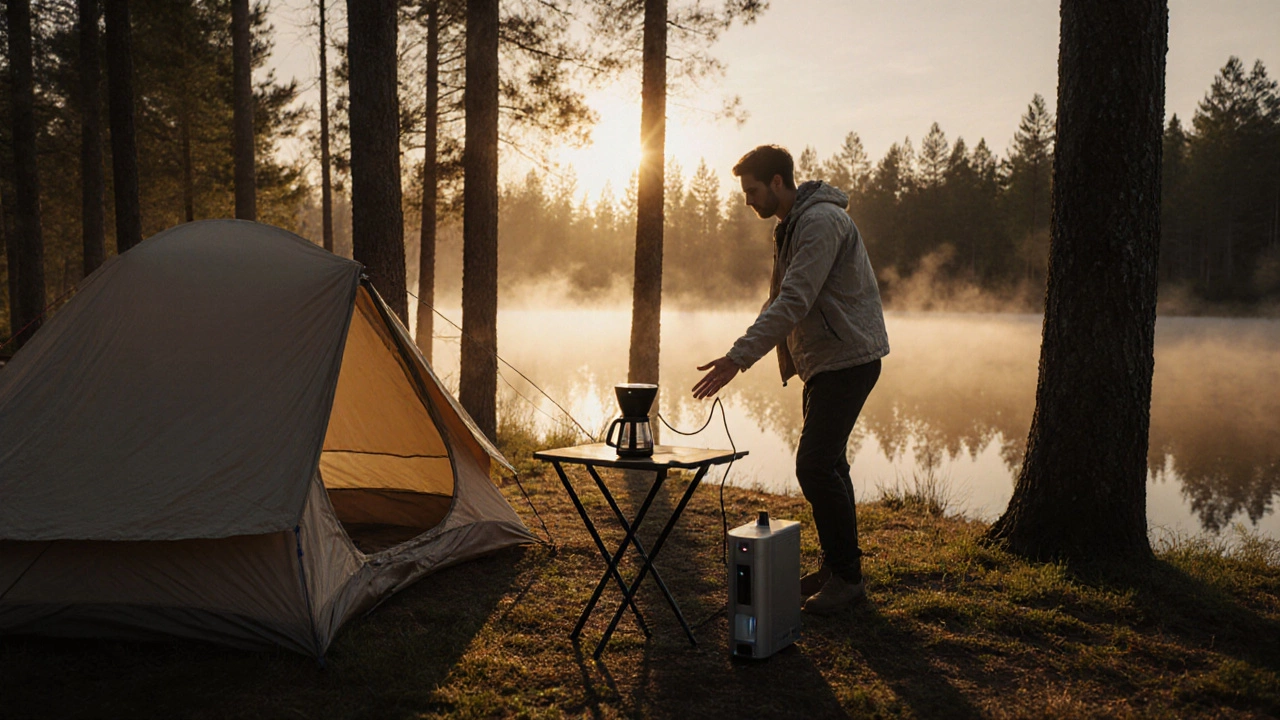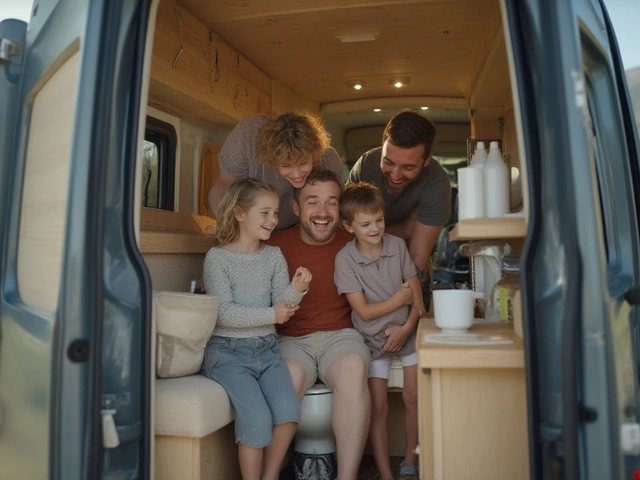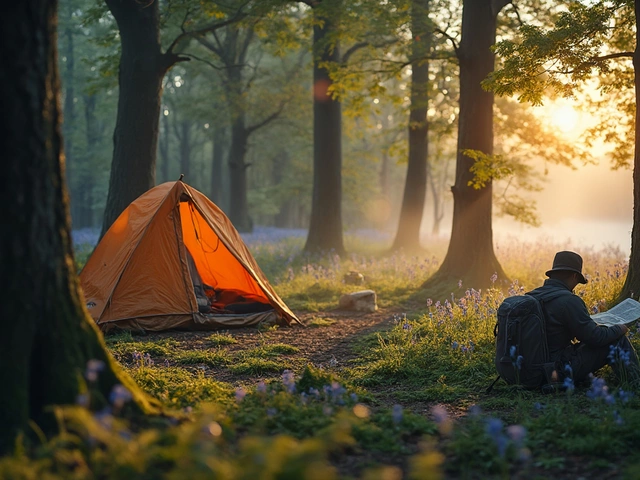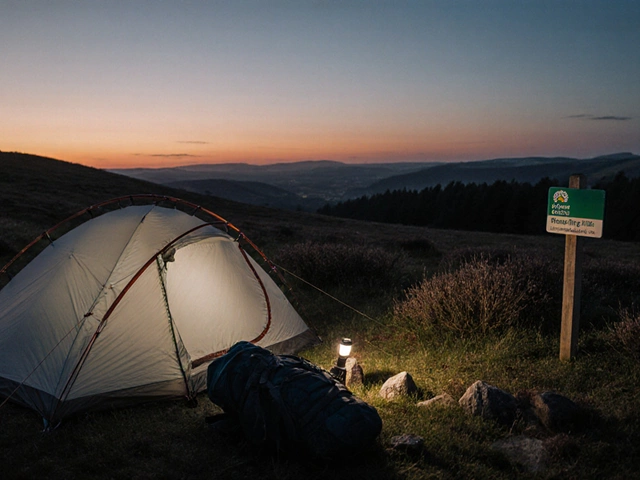Camping Power Station Calculator
Calculate Your Power Needs
Enter your devices to determine required power station capacity
Your Power Summary
Tip: The article recommends choosing a unit with 20-30% higher capacity than your calculated total for safety margin.
Imagine waking up at a remote campsite, the sunrise spilling over the trees, and you reach for the coffee maker - only to find no power. If you’ve ever faced that moment, you’re probably asking yourself: do I need a camping power station? In this guide we’ll break down when a power station makes sense, how to pick the right one, and what alternatives exist.
Key Takeaways
- A power station is ideal when you need quiet, clean energy for electronics, lights, and small appliances.
- Size your unit by calculating total watt‑hours required for your typical gear.
- Compare against portable generators and solar panels to avoid over‑paying for features you’ll never use.
- Look for multiple output ports, a pure‑sinus inverter, and a reliable charge controller.
- Safety basics - ventilation, proper grounding, and regular maintenance - keep your campsite risk‑free.
Understanding Your Power Needs
Before you buy anything, list every device you plan to run. A smartphone charger draws about 5 W, a LED lantern 3‑10 W, a portable fridge 40‑80 W, and a small electric kettle can spike to 1000 W for a few seconds. Add the running wattage together, then multiply by the number of hours you’ll use each device. That gives you a total watt‑hour (Wh) figure.
For a typical weekend family camp, the math looks like this:
- Phone chargers: 5 W × 4 hours × 2 phones = 40 Wh
- LED lights: 10 W × 6 hours = 60 Wh
- Portable fridge: 60 W × 24 hours = 1440 Wh
- Coffee maker (short burst): 1200 W × 0.2 hours = 240 Wh
Total ≈ 1,780 Wh. Choose a unit that can deliver at least 2,000 Wh to give yourself a safety margin.
Types of Portable Power Solutions
Three main categories dominate the market:
- Camping Power Station is a sealed battery pack with an integrated inverter, charge controller, and multiple output sockets.
- Portable Generator is a small gasoline or diesel engine that converts fuel into electricity on demand.
- Solar Panel setup captures sunlight, stores energy in a battery, and provides clean power as long as the sun shines.
Each has pros and cons. Power stations are quiet and emission‑free but limited by stored energy. Generators offer unlimited runtime if you have fuel, but they’re noisy and produce exhaust. Solar is sustainable but dependent on weather and daylight.
When a Power Station Makes Sense
If you camp at sites with strict noise rules, or you’re in a fire‑danger zone where open flames and exhaust are prohibited, a power station is often the only legal option. It also shines for tech‑heavy trips - charging laptops, running a Bluetooth projector for movie nights, or powering a medical device that requires clean sine‑wave power.
For glamping or luxury tents that include a small fridge and lighting, a 1,500‑2,000 Wh station can replace a full house connection without the hassle of digging for a hook‑up.
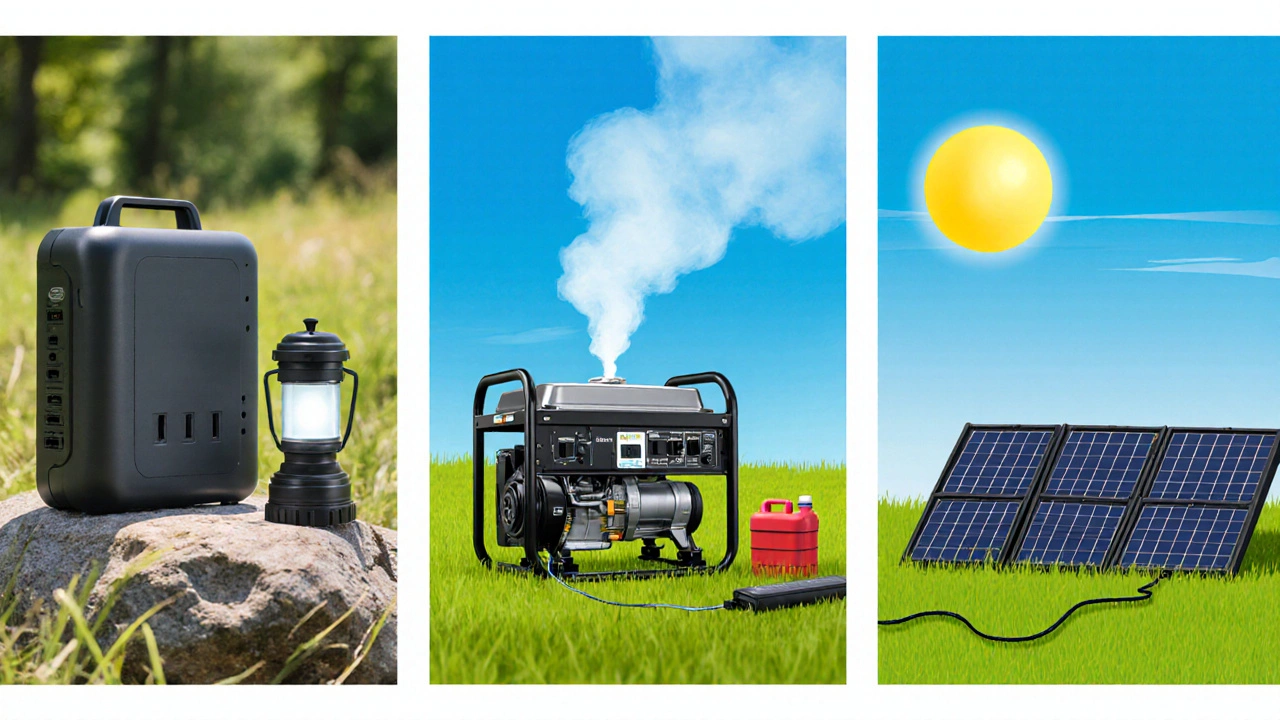
How to Size a Power Station
Three key attributes determine whether a unit fits your needs:
- Battery Capacity (measured in Wh) shows how much energy you can store.
- Inverter Rating (continuous and surge watts) tells you what appliances it can run at once.
- Charge Controller efficiency affects how quickly solar panels can replenish the battery.
Rule of thumb: choose a station with at least 25‑30% higher Wh than your calculated total, and an inverter rated for 1.5‑2× the highest single‑device surge you expect.
Top Features to Look For
Beyond the basic specs, these features differentiate a good power station from a mediocre one:
- Pure‑sinus inverter - essential for sensitive electronics like laptops and medical equipment.
- Multiple output ports - AC outlets, 12 V DC car socket, USB‑C PD, and 5 V USB‑A for charging phones.
- Fast re‑charging - ability to jump from 0 to 80% in under two hours via AC wall charger.
- Battery chemistry - Li‑ion offers better energy density; Li‑FePO₄ provides longer cycle life and is less fire‑prone.
- Smart app integration - monitors remaining capacity, health, and can set power‑save modes.
Comparing Power Solutions
| Solution | Power Output (W) | Fuel/Source | Noise (dB) | Weight (kg) | Typical Price (AU$) |
|---|---|---|---|---|---|
| Camping Power Station | 1500 (continuous) / 3000 (surge) | Li‑ion battery | 35 (silent) | 15‑20 | 1,200‑1,800 |
| Portable Generator | 3000 / 3500 | Gasoline (5‑8 L tank) | 60‑70 | 30‑40 | 800‑1,200 |
| Solar Panel Kit | 200 (peak) - depends on sunlight | Sunlight (foldable 200 W panels) | 0 (silent) | 5‑8 (panels only) | 500‑900 (panels) + battery cost |
Notice the power station sits in the middle on price, but wins on noise and emissions. If you camp in quiet zones, the trade‑off is worth it.
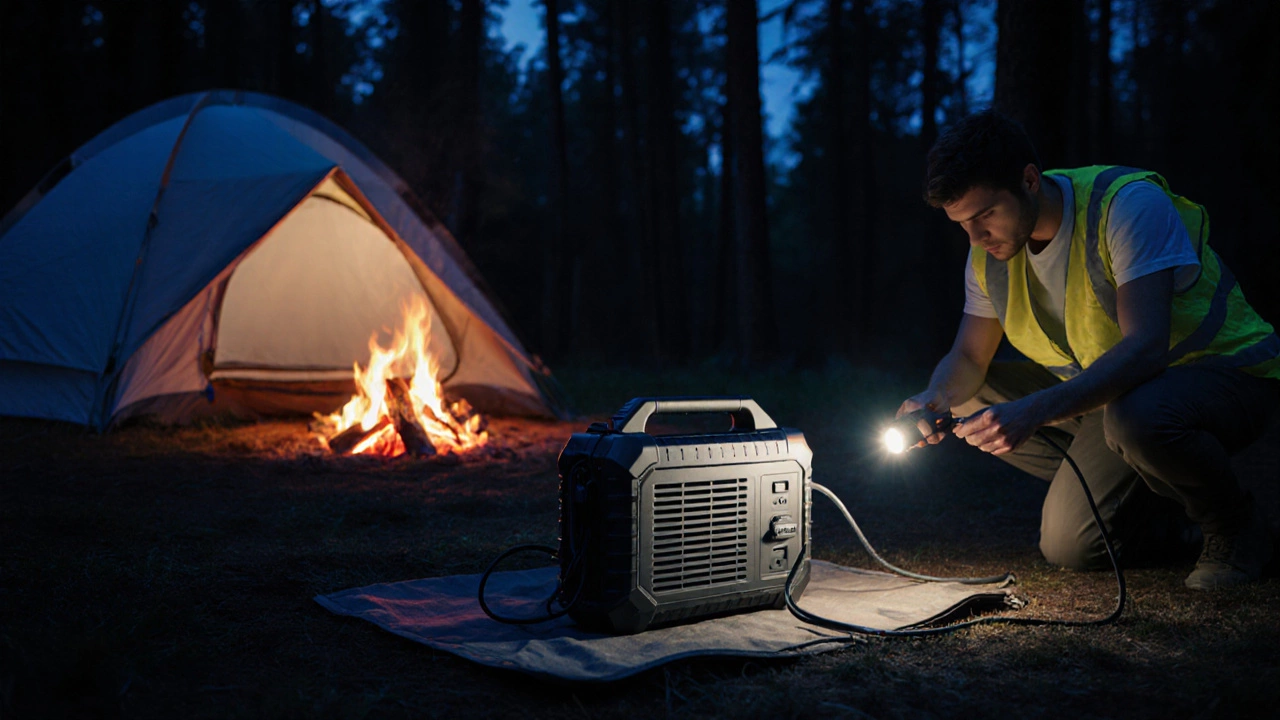
Practical Tips & Safety
Even a sealed battery can be hazardous if mishandled. Follow these rules:
- Never charge a power station inside a closed tent - heat buildup can trigger thermal shutdown.
- Use the supplied AC adapter; third‑party chargers can overload the battery management system.
- Ground the unit when you connect to a campsite’s 240 V hook‑up - many stations have a built‑in ground‑fault interrupter (GFI).
- Keep fuel containers for generators at least 10 m away from the campsite and never store them inside your tent.
- Perform a visual inspection of cables before each trip - look for cracked insulation or loose connectors.
Common Mistakes to Avoid
First‑time campers often over‑estimate what a single power station can do. Here are the top blunders:
- Assuming “watt‑hour” and “watt” are interchangeable - Wh is energy, W is power.
- Ignoring surge requirements - a coffee maker may need a momentary 1,200 W burst.
- Choosing the cheapest unit without a pure‑sinus inverter - cheap units can damage laptops.
- Relying on solar alone in cloudy climates - always have a backup like a generator or extra battery bank.
- Forgetting to reset the battery management system after a deep discharge - this prolongs lifespan.
Quick Checklist Before You Pack
- Calculate total Wh demand for the trip.
- Match or exceed that demand with the station’s battery capacity.
- Confirm the inverter can handle the highest surge load.
- Check that you have all required cables (AC, DC, solar input).
- Test the unit at home - run a high‑draw device for 30 minutes to verify performance.
FAQs
Can I use a camping power station to run a full-size fridge?
Most portable fridges draw 40‑80 W continuously, so a 1,500 Wh station can run one for 18‑30 hours before recharging. For a full‑size 120 V fridge, you’d need a much larger unit or connect to a campsite’s hook‑up.
How long does it take to recharge a power station with solar panels?
A 200 W panel delivering full sun (≈5 hours) can add about 1,000 Wh. A 2,000 Wh station would therefore recharge to 80% in roughly 10‑12 hours of good sunlight.
Are portable generators allowed in Australian national parks?
Many parks restrict open‑flame and exhaust devices. Always check the park’s specific regulations; quieter, low‑emission generators may be permitted, but a battery‑based station is usually the safest bet.
What maintenance does a power station need?
Store it at 50‑70% charge if not used for >3 months, keep it in a cool dry place, and run a full charge‑discharge cycle annually to keep the battery chemistry healthy.
Is a power station worth the cost for a weekend trip?
If you value quiet, clean power for phones, lights, and a small fridge, the convenience often outweighs the $1,200‑$1,800 price tag, especially when you camp multiple times a year.
Whether you opt for a power station, a generator, or a solar kit, the right choice depends on your campsite rules, the devices you need, and how much you’re willing to carry. Use the checklist, do the math, and you’ll avoid the dreaded ‘no power’ surprise on your next adventure.
